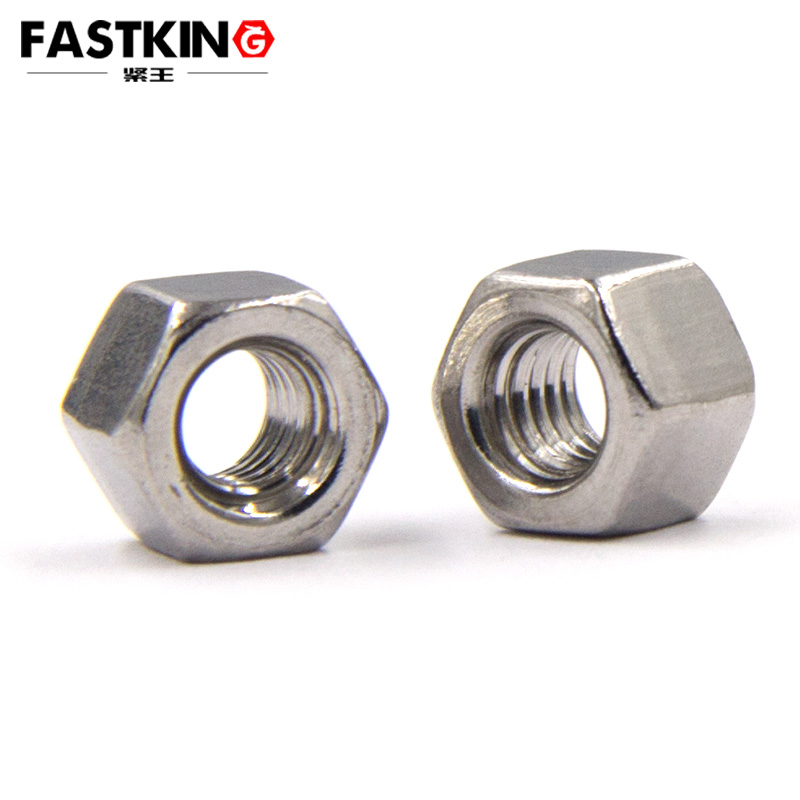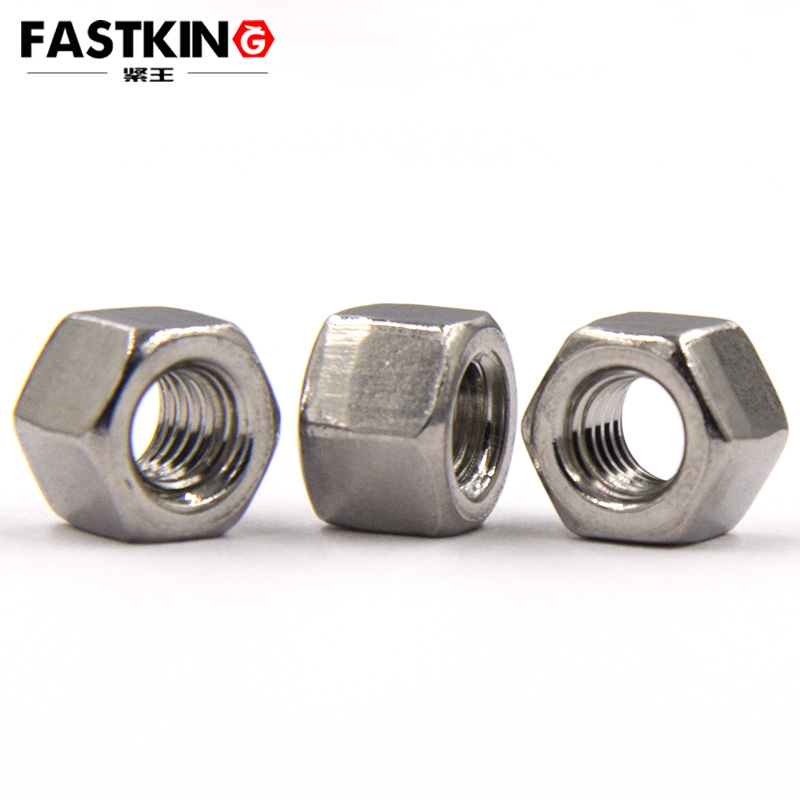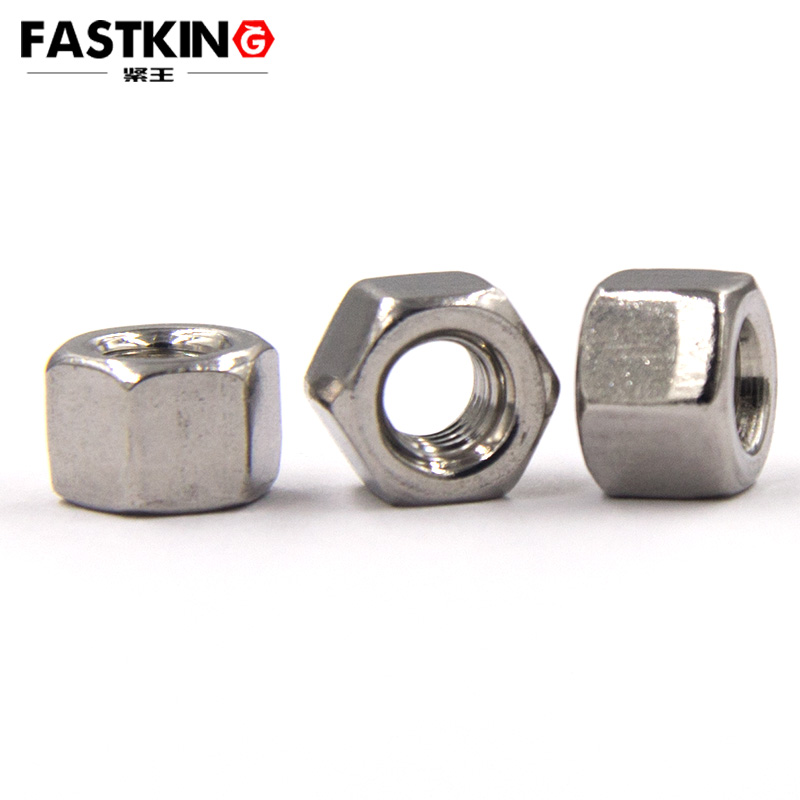Application Scenarios and Usage Methods of Hexagon Thick Nut Hexagon Thick Nuts
Introduction
The hexagon thick nut, as a critical component in mechanical fastening, plays an indispensable role in industrial equipment, building structures, and transportation due to its high-strength clamping performance. GB55 is China’s national standard for thick nuts (equivalent to ISO 4035), specifying technical requirements such as dimensions, materials, and mechanical properties. This article systematically analyzes the typical application scenarios of hexagon thick nut GB55 and elaborates on its correct usage methods, providing practical guidance for engineers and technicians.
Product Characteristics of Hexagon Thick Nut
1. Structural Features
-
Height is 1.5–2 times that of standard nuts, providing greater thread contact area.

-
Hexagon width across flats complies with GB/T 6175, ensuring compatibility with standard wrenches.
-
Surface treatments include zinc plating, black oxide, and Dacromet coating for different environmental needs.
2. Mechanical Properties
-
Materials: Typically carbon steel (Grade 4.8/8.8) or stainless steel (A2-70).
-
Tensile strength up to 800 MPa (Grade 8.8).
-
Thread accuracy meets 6H grade, ensuring stable mating performance.
Typical Application Scenarios
1. Heavy Machinery
-
Applications: Main shaft fixation in mining crushers, bearing housing installation in metallurgical rolling mills.
-
Advantages: The increased height effectively distributes vibration loads, preventing thread stripping. A cement plant reported a 60% reduction in bolt loosening after switching to GB55 nuts.
2. Steel Structure Construction
-
Applications: Wind-resistant bracket connections in high-rise buildings, truss node fixation in bridges.
-
Critical Role: Thick nuts combined with high-strength bolts meet preload requirements under dynamic loads. The Hong Kong-Zhuhai-Macao Bridge used GB55 nuts with M24 bolts in key joints.
3. Rail Transportation
-
Applications: High-speed train bogie suspension systems, rail fastening systems.
-
Special Requirements: Must be used with anti-loosening washers, complying with DIN 25201 anti-loosening standards.
4. Energy Equipment
-
Wind Power: Over 400 GB55 nuts are used in the flange connections of a single wind turbine tower.
-
Nuclear Power: Requires stainless steel nuts that pass SCC (Stress Corrosion Cracking) tests.
Correct Usage Methods & Precautions
1. Pre-Assembly Preparation
-
Thread Inspection: Use GO/NO-GO gauges—GO gauge must pass freely, NO-GO gauge should not exceed 3 turns.
-
Surface Cleaning: Remove oil, debris, and burrs from threads (recommended: wire brush cleaning).
-
Lubrication: Apply molybdenum disulfide grease in high-temperature environments.

2. Torque Control Method
-
Step Tightening: Pre-tighten to 30% of final torque, then tighten in two stages to 100%.
-
Torque Reference (Grade 8.8):
Thread Size M12 M16 M20 M24 Torque (N·m) 90 220 430 750
3. Anti-Loosening Measures
-
Mechanical Locking: Use GB/T 6187 lock washers.
-
Friction Locking: Apply NAS3350 double-nut method.
-
Chemical Locking: Apply thread-locking adhesive (e.g., Loctite 243).
4. Maintenance & Inspection
-
Re-tightening: Perform within 24 hours after initial operation.
-
Periodic Inspection: Use ultrasonic bolt tension meters for preload monitoring.
-
Corrosion Protection: Inspect coatings every 6 months in corrosive environments.
Common Issues & Solutions
1. Thread Galling
-
Cause: Stainless steel nuts experience intergranular adhesion under high temperatures.
-
Solution: Apply anti-seize compound (graphite-based) before assembly.
2. Preload Loss
-
Case Study: A wind turbine project saw 35% torque loss after 3 months.
-
Improvement: Switched to hydraulic tensioners for precise preload application.
3. Coating Failure
-
Marine Environments: Use hot-dip galvanizing + sealant.
-
Dacromet Coating: Minimum thickness ≥8 μm.

Technology Trends
-
Smart Nuts: Embedded RFID chips for remote preload monitoring.
-
Lightweight Design: TC4 titanium alloy nuts in aerospace applications.
-
Advanced Locking: Shape-memory alloy washers under development.
7. Conclusion
As a fundamental fastener, the hexagon thick nut GB55 significantly impacts the reliability of mechanical connections. Proper selection and installation based on operational conditions—including material grade and anti-loosening solutions—are essential. Implementing a full lifecycle management system for fasteners is recommended. With advancements in smart manufacturing, digitalized nut management will become a key trend in future technological upgrades.
